
Stroboscopic rhythm as chromaesthesia in Curgenven's Agenesis
This paper situates Robert Curgenvens audiovisual performance Agenesis in the history of synaesthetic experiments and stroboscopic effects.
October 2023
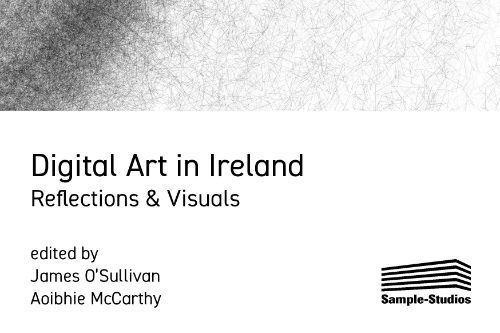
What Digital Angst Reveals
My contribution to the book Digital Art in Ireland: Reflections & Visuals.
August 2023
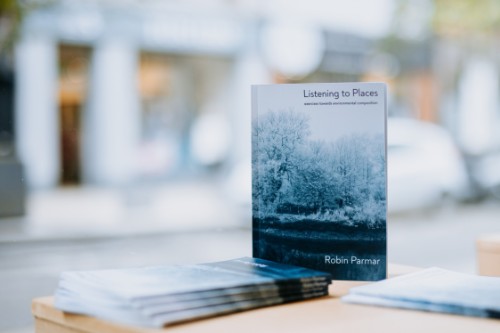
Why I Wrote Listening to Places
At the 2023 World Forum for Acoustic Ecology Conference I presented a talk on my motivation for writing the book Listening to Places.
March 2023
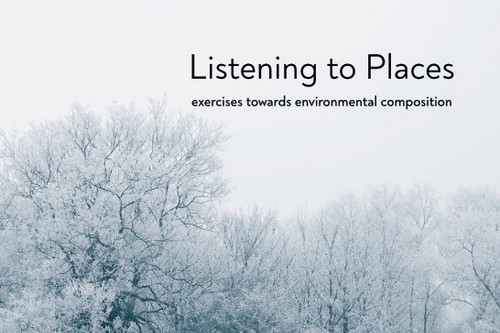
Listening to Places
My book Listening to Places: exercises towards environmental composition (Void Gallery, Derry, 2022) is a collection of 36 practical exercises designed to enhance appreciation of our nuanced and fascinating auditory environment.
July 2022
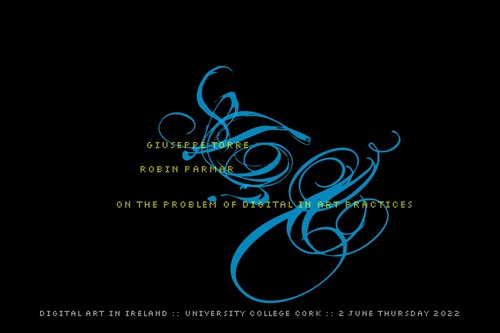
On the problem of DIGITAL in art practices
Giuseppe Torre and myself presented a panel discussion/debate “On the problem of DIGITAL in art practices” at the Digital Art in Ireland conference, University College Cork.
June 2022
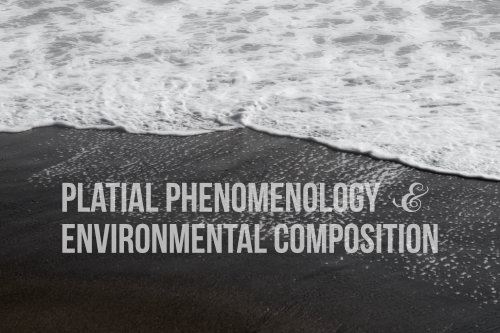
Platial Phenomenology and Environmental Composition
This dissertation investigates theories of place that were known to the Ancient Greeks, but which have been largely forgotten in our ocularcentric world. I propose that alternative phenomenological practices can be built from topos and choros, as illustrated by the sonic practices of Dallas Simpson and Robert Curgenven.
September 2019
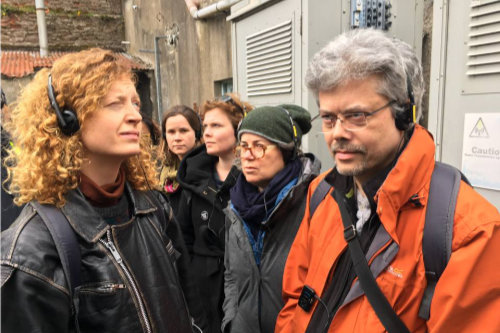
Living the Anthropocene: Rethinking Sound and Nature
We live in The Anthropocene, an epoch marked by human influence on species decline and climate change. As a field recordist, I wonder how historical approaches to nature have been complicit with these changes. At HearSay this topic was approached through two talks and a listening session, specifically designed for an audience of radio practitioners.
April 2019
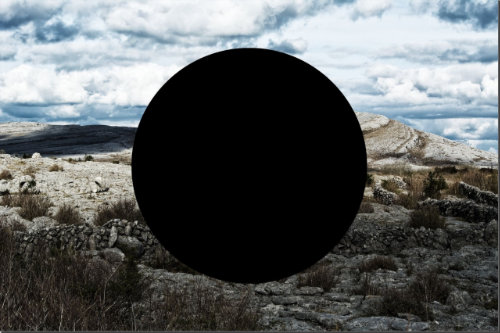
Sounding the Anthropocene @ WFAE
We live in the Anthropocene, a critical juncture in which Homo sapiens has become the dominant force on the planet. The concepts of nature that have been leveraged by our society have failed us. Now, at the very brink, we must interrogate our assumptions, to begin again, from the root.
October 2018
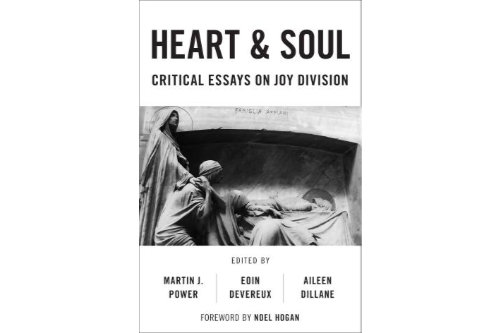
Joy Division in Space: The Aesthetics of Estrangement
I contributed this chapter to the book Heart and Soul: Critical Essays on Joy Division, edited by Martin J. Power, Eoin Devereux, Aileen Dillane, published by Rowman & Littlefield.
October 2018
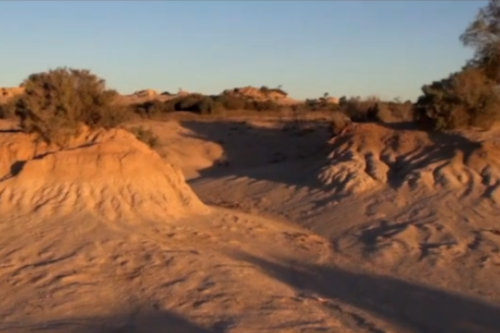
Robert Curgenven: Locate Yourself
This is a review of the art exhibition Locate Yourself, an anthology of works by Robert Curgenven, which was presented at CIT Wandesford Quay Gallery, Cork, Ireland in 2017.
August 2018
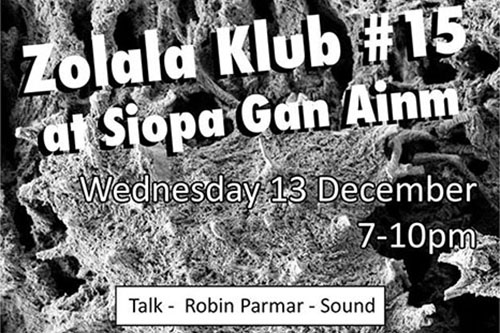
Sounding the Anthropocene @ Zolala
“Sounding the Anthropocene: Field Recording and Ideologies of Nature” is a talk that examines how field recording practice has been complicit with ideologies of nature that have led us to our current ecological crisis.
December 2017
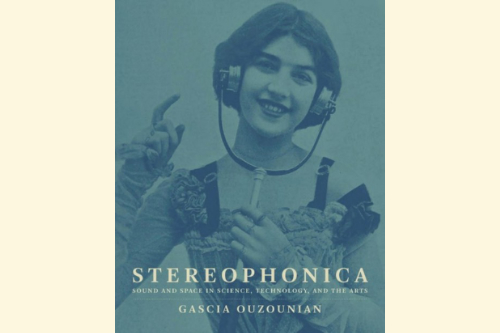
Stereophonica Review
This review of Gascia Ouzounian’s intriguing book Stereophonica: Sound and Space in Science, Technology, and the Arts was published in the journal Organised Sound.
December 2017
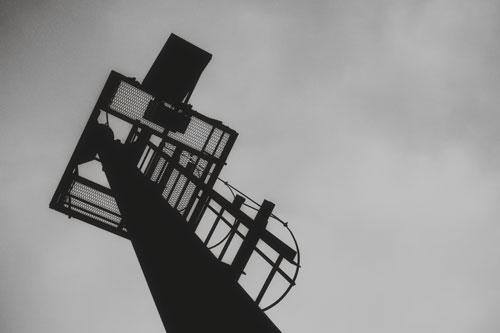
Radio Without Radio Waves: Utopian Proposals
What role does radio have in today’s complex world of podcasts, phone apps, and digital broadcasting? Is there still scope for those Utopian ideals that birthed radio in the first place? This talk will examine the history of radio by considering eight transmission technologies, from telegraph to webcast. From this foundation, “radio” will be defined in a novel way, without restriction to any particular technological regime. It will be demonstrated that radio in any form has an important role as an ephemeral and inclusive force, flourishing as “invisible voices in the wind, in thunder, in the dream” (R. Murray Schafer).
September 2017
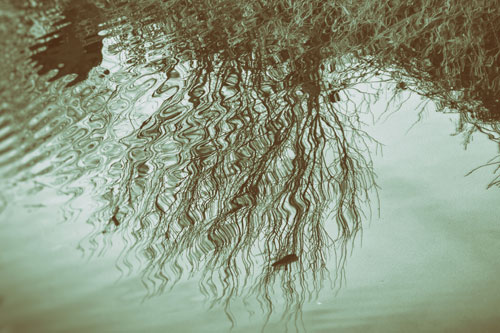
Atoms and Digital Audio: Epicurus Meets Mika Vainio
Though we commonly describe sound as a wave, a minority viewpoint holds that sound is more properly corpuscular. This concept can be traced back to the atomists, who held that all of nature could be construed as two elements: atom and void. Foremost among these thinkers is Epicurus, who proposed that an infinitesimal “swerve” in the otherwise regular movement of atoms is responsible for all interactions and hence all nature. This paper will illustrate the contemporary relevance of this theory, in light of corpuscular theories of sound, granular synthesis, and the minimal techno of Mika Vainio and Panasonic.
September 2017
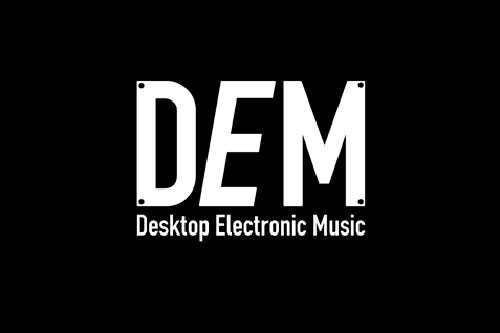
Desktop Electronic Music
This series of 12 articles covers interface design, proposals for mixer architectures, MIDI wiring diagrams, improvisation, and the music of Mika Vainio (Panasonic). What they have in common is the concept of Desktop Electronic Music (DEM).
August 2017
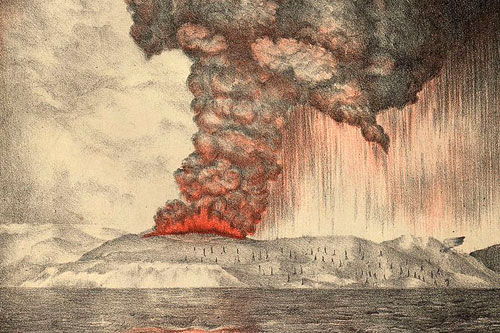
Sound Ideas
“Sound Ideas: The Surprising World of Sound and Listening” was a talk gaven at Trinity College, Dublin, in coordination with the Science Gallery’s Sound Check exhibition. This talk was aimed at a general audience. Topics included what sound actually is (acoustics), how we hear (psychoacoustics), and various myths of listening.
June 2017
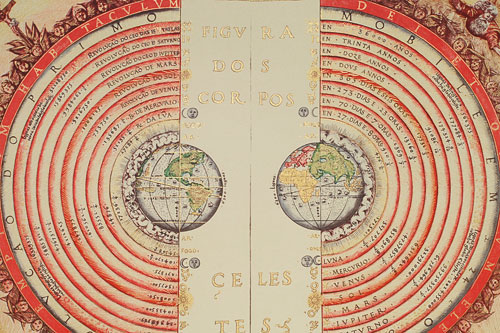
Geos, topos, choros: three models for thinking about place
The Ancient Greeks described place using three methods: geos, topos, and choros. Of these only Ptolemy’s geography, a geometric approach to algorithmic map generation, has survived to any extent. This paper describes the elided concepts, proposing them as integral to establishing a rich conceptual framework for critique of contemporary sonic practice.
April 2017
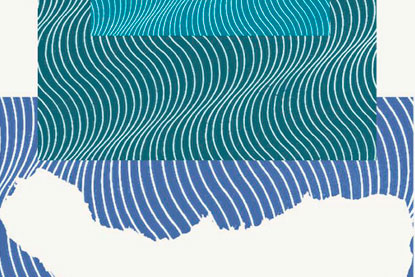
São Miguel Island residency
This residency on São Miguel Island, Azores, Portugal, ws part of Invisible Places 2017. My sounding of the island produced recordings, poetic texts, and lens-based work, as documented on the process blog Sounding Miguel.
See also the entry on the installation “In that place, the air was very different”.
March 2017
![A Brief History of Field Recording [conference paper]](img/paper-brief-history-1-OMIT.jpg)
A Brief History of Field Recording
Paper presented at ISSTA 2016 in Derry-Londonderry, Northern Ireland.
This paper describes early field recording practice in order to demonstrate the varying imperatives – aesthetic, documentary, commercial, educational – that drove its development. The works of Karl Reich, Ludwig Koch, and Albert Brand will be auditioned and contextualised.
September 2016
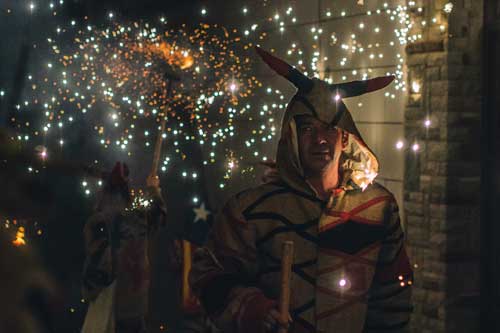
Terra Alta residency
This residency was curated by sound artist Linda O Keeffe and composer Tony Doyle. The location was the small village of La Fatarella in the northern Terra Alta region of Catalonia. Many pleasant hours were spent recording wind turbines, local festivals, and the cicada of the fields.
August 2016
![Sounding Cobh [residency]](img/residency-sounding-cobh-1.jpg)
Sounding Cobh
I am intrigued by the role that sound plays in our perception of environments, particularly in how we constitute place. My model of investigation is built around the sounding, a concept which transforms sound from noun to verb, in order to emphasise the active process by which we create a place anew, each time it is encountered.
This residency at the Sirius Arts Centre concluded with a public performance and exhibition on 25 May.
May 2016
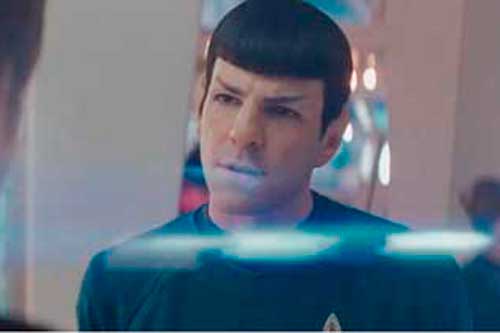
Science-Fiction and Hypermodernism
This paper was presented at the inaugural Hypermodernism conference in Paris.
Science-fiction was the original hypermodern, predicated on faith in reason and the scientific method, fixated on our ability to understand and control our environment, obsessed with novelty. Following the New Wave experiments of the 1960s, science-fiction became increasingly mediated. Our contemporary touch panels, ubiquitous computation devices, and fibre optic communications precipitated out of this space of imagination. Now that it is everywhere, science fiction has lost its original function.
March 2016
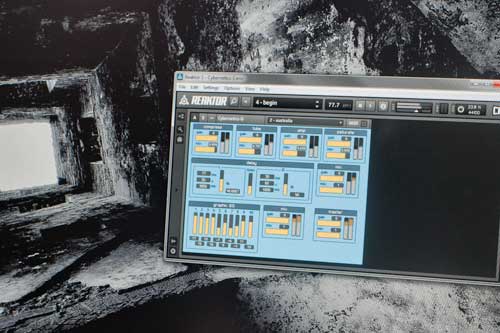
Creating an Autopoietic Improvisation Environment Using Modular Synthesis
This paper was published in the Canadian journal eContact!, a special edition titled Analogue and Modular Synthesis: Resurgence and Evolution, edited by Richard Scott.
The “no source mixing desk” is a sound mixer with outputs wired to inputs, so that the self-noise of the circuitry is the only sonic material. The No Input Software Environment (NISE) is my software implementation of such a system, designed to encourage musical experimentation.
March 2016
![The Music Videos of Angela Conway [conference paper]](img/paper-angela-conway-1-OMIT.jpg)
The Music Videos of Angela Conway
Paper given at the Light Moves symposium in Limerick, Ireland.
This seminar introduces the work of Angela Conway, highlighting her relationship with Michael Clark’s transgressive dance company and the equally iconoclastic rock group Wire. Two rare videos, screened in full, demonstrate the important place of the music video form in the context of screendance
November 2015
![Transits and Transmissions: Joy Division in Space [conference paper]](img/paper-transits-and-transmissions-1-OMIT.jpg)
Transits and Transmissions: Joy Division in Space
Paper given at Atrocity Exhibition, the first conference dedicated to the work of Joy Division.
This paper examines the lyrics of Ian Curtis, Peter Saville’s sleeve designs, and Martin Hannett’s studio production, in the context of Joy Division’s music. At first appearing disparate, these elements together emphasise containment, frames, distance, and absence. They provide spaces, both literal and figurative, in which music and listener can meet.
November 2015
![Digital Angst and the Phenomenology of Discontinuity [conference paper]](img/paper-digital-angst-1.jpg)
Digital Angst and the Phenomenology of Discontinuity
Paper given at ISSTC 2015 in Limerick, Ireland.
Many listeners remain fundamentally uneasy with digital audio, considering that it is “cold” and robs music of “life”. This paper examines this angst through Alberti’s perspective theory, Zeno’s paradoxes, Baudrillard’s philosophy of the virtual, and granular synthesis. It proposes a corpuscular phenomenology of sound that reframes discontinuities not as absences, but as generative sites, full of possibility.
August 2015
![Digital Anxiety Dispelled: Granular Synthesis and the Paradox of Discontinuity [book chapter]](img/paper-digital-anxiety-1-OMIT.jpg)
Digital Anxiety Dispelled: Granular Synthesis and the Paradox of Discontinuity
This is a chapter in the book Jean Baudrillard: Fest für einen Toten, subsequently revised for presentation in English.
July 2015
![Sounding Cork [residency]](img/residency-sounding-cork-1.jpg)
Sounding Cork
I am intrigued by the role that sound plays in our perception of environments, particularly in how we constitute place. This residency at The Guesthouse manifest itself in field recordings, photography, and texts, presented via a process blog and a performance/exhibition.
May 2015
![Hearing as Science-Fiction [talk]](img/paper-hearing-as-sf-1.jpg)
Hearing as Science-Fiction
Talk given at the Hearsay Audio Arts Festival, Kilfinane, Co. Limerick.
The mysterious and wonderful complexity of our acoustic sense is explored by considering psychoacoustic effects. Several radical propositions are made. The ear is itself a digital apparatus. Hearing is acoustic time-travel, an impossible activity that we nonetheless take for granted.
November 2014

Spectator, Performer, Magician: Orders of Interactivity
Paper given at Retune 2014: Inside the Mirror at Arena Glashaus, Berlin.
This paper considers the mirror as an object of engagement and estrangement. Three orders of interactivity are proposed: the Spectator, considered by Marcel Duchamp to be an active contributor to an artwork; the Performer, as demonstrated in Kaprow’s “Happenings”; and the Magician, elaborated through examination of Alberti’s assertion that Narcissus invented painting.
September 2014
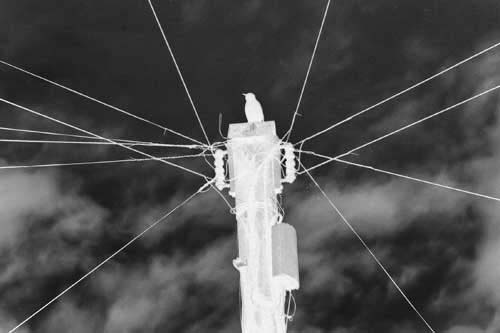
"Caged Birds" as Field Recoding
Artist talk given at Invisible Places - Sounding Cities, the symposium of the World Forum of Acoustic Ecology, in Viseu, Portugal.
I explain some of the ideas behind the composition “Caged Birds (Augmentation)”, a field recording of a dawn chorus in the para-urban environs in which I live. The subtle electroacoustic processing evident in this piece parallels transformations in birdsong that urban development has engendered.
July 2014
![Sounding Place: Towards a Practice of Field Recoding [conference paper]](img/paper-sounding-place-1.jpg)
Sounding Place: Towards a Practice of Field Recoding
Paper given at Invisible Places - Sounding Cities, the symposium of the World Forum of Acoustic Ecology, in Viseu, Portugal.
This paper applies conceptions of “place” derived from the disciplines of human geography, ethnomusicology, and phenomenology to the practice of field recording. Place is a product of an ongoing reflexive and discursive process by which we encode meaning in the milieu.
July 2014
![The Sono Prototype and Alberti's Window [conference paper]](img/paper-sono-prototype-1-OMIT.jpg)
The Sono Prototype and Alberti's Window
Paper presented at Urban Soundscapes and Critical Citizenship, University of Limerick, Ireland.
The Sono is a proposed window-mounted device that blocks unwanted sounds from the outside world. This paper analyses the history of “the window” as emblematic of visual hegemony, demonstrating how the non-relational, fixed-perspective approach to our senses embedded in the Sono denies our integrated, haptic sensorium.
March 2014
![Making Noise and Reading Noise [book review]](img/paper-making-noise-1-OMIT.jpg)
Making Noise and Reading Noise
Review of Making Noise by Hillel Schwartz in the special “Noise” issue of Interference: A Journal of Audio Culture.
This large volume convinces that noise has always been a hot topic, from the very birth of the universe, through the gestation of human culture, right on down the line to the present. But what Schwartz omits is as telling as what he includes.
September 2013
![Radio Before and After Radio Waves [conference paper]](img/paper-radio-waves-1.jpg)
Radio Before and After Radio Waves
Paper given at ISSTC 2013, the annual convocation of the Irish Sound, Science and Technology Association at the Dún Laoghaire Institute of Art and Design, Ireland.
Radio was born in a brilliant burst of activity by amateur technicians, radiophonic artists, and Utopian thinkers (Khlebnikov, Weil, Marinetti, Arnheim), before being colonised as valuable property by private companies or as sovereign territory by state authorities. But where has radio gone in today’s digital world? This paper provides a particular definition of radio as both spectral and ubiquitous, allowing us to plot a through line from past to future forms.
August 2013

"The Garden of Adumbrations": Reimagining Environmental Composition
Paper published in the journal Organised Sound.
R. Murray Schafer’s soundscape, predicated on a schizophonic engagement with sound, and Pierre Schaeffer’s musique concrète, based on an acousmatic relationship, have been the dominant approaches for those composing with environmental sounds. This paper critiques the ideologies behind these systems, instead suggesting an approach that uses Deleuze and Guattari’s rhizome as a generative metaphor.
December 2012
![Becoming noise: unwanted sounds from Helmholtz To Hegarty [conference paper]](img/paper-becoming-noise-1.jpg)
Becoming Noise: Unwanted Sounds From Helmholtz To Hegarty
Delivered at ISSTC 2012, the annual convocation of the Irish Sound, Science and Technology Association (Cork, Ireland).
This paper presents over a dozen readings of noise, referencing Attali, Cage, Cascone, Derrida, Hegarty, Helmholtz, Kahn, Schafer, Schwarz, and Virilio. This surplus of definitions will be used as justification for reconsidering noise, not as a noun, but as verb. Noise is process, a “coming into being”, a generative axis without which no sound could exist.
August 2012
![No Input Software: Cybernetics, Improvisation and the Machinic Phylum [conference paper]](img/paper-no-input-software-1-OMIT.jpg)
No Input Software: Cybernetics, Improvisation and the Machinic Phylum
Paper delivered at ISSTA 2011, the first convocation of the Irish Sound, Science and Technology Association, Limerick, Ireland.
Feedback describes a circuit (electronic, social, biological or otherwise) in which the output or result influences the input or cause. This paper examines how cybernetics were applied to musical systems by Louis Barron, David Tudor, and Toshimaru Nakamura. The author presents the No Input Software Environment (NISE), an implementation of a “no source mixing desk” that tests our faith in the digital realm as a site of perfect representation and replication.
August 2011
![Forgetting Interactivity: Notes Towards a Typology [conference paper]](img/paper-forgetting-interactivity-1.jpg)
Forgetting Interactivity: Notes Towards a Typology
Paper delivered at Interactivity and the Audio Arts, University of Kent, UK.
This paper develops a typology of interactivity, defined according to the roles played by various entities within the system. Along the way, the paper challenges the contemporary assumption of the necessity for a computer in the system, considers the problematic inherent in the oxymoron “virtual reality” and explores the mirror form in relationship to the interactive.
June 2010
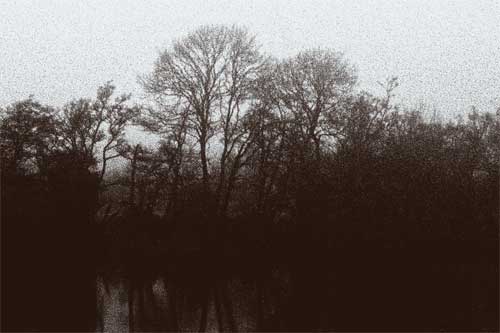
"The Garden of Adumbrations": An Anecdotal Soundscape
This thesis examines R. Murray Schafer’s conception of the “soundscape”, Pierre Schaeffer’s “acousmatic”, and the “anecdotal” works of iconoclast Luc Ferrari. Overviews of musical time scales, sound ecology, spatial perspectives, reduced listening, and schizophonia are undertaken along the way.
September 2009
![Complementarity: An Archipelago [book chapter]](img/paper-complementarity-1.jpg)
Complementarity: An Archipelago
Chapter in the book Framemakers: Choreography as an Aesthetics of Change, published by Daghdha, Ireland.
Niels Bohr used the term complementarity to explain how, in order to appreciate reality, we must balance two contradictory concepts in our mind at the same time. This chapter connects quantum foam, childhood nightmares, the measurement of sound, the pigeonhole principle, musical chairs, Alexander’s pattern language, post-punk musicians Wire, the Observer Pattern, and cybernetics.
October 2008
![Jean Baudrillard: How to Disappear Completely [article]](img/paper-how-to-disappear-completely-1.jpg)
Jean Baudrillard: How to Disappear Completely
This short appreciation, following the death of Jean Baudrillard, appeared in The International Journal of Baudrillard Studies.
March 2007
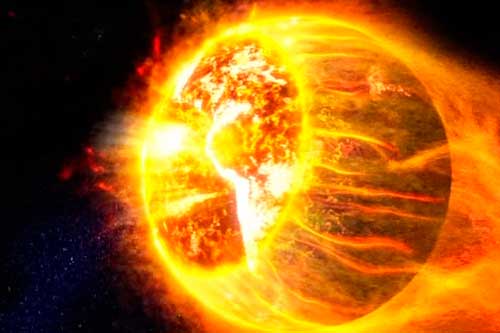
Time and Reality Die in Spectacle: Doctor Who as the Perfect Crime
The 2005 reboot of the television serial Doctor Who follows a time-traveller named The Doctor. We soon learn that his race and planet have long ago been destroyed. The same fate is in store for Earth, its immolation a spectacle for galactic tourists. Subsequent episodes are played out in the shadow of this predestined apocalypse. By returning to the present we escape our human end, but in so doing infect reality with a principle that erases its meaning. The perfect crime is constituted in the very hypothesis of time travel that gives this programme life.
September 2006